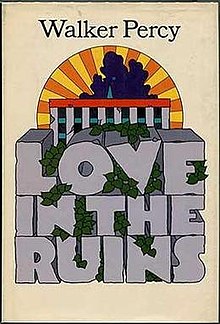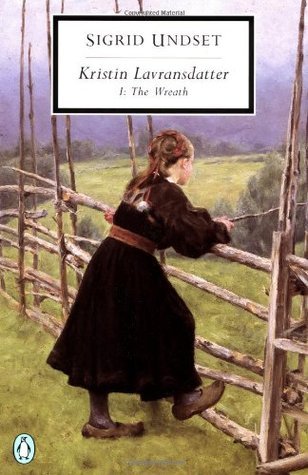It's top ten time, everyone! Gather round the warmth of the fire and I shall regale with you with my top ten books of the year.
My resolution this year was to beat my personal best, which I set in the very first year of the blog's existence: 62 books. Resolution achieved--I finished with 67. In 2018 I'm going to beat my record again, and if I can, I'd like to read 75 books. There are just too many books in the world, and too little time in a life. So why not read as much as you can?
As a consequence, I feel like my list of favorite books this year is very
deep. I'm not sure I read anything that bowled me over like last year's
Lives of Girls and Women or
The Man Who Loved Children, but I think I may have really liked more of what I read than any other year. Even some books I really enjoyed, like
Molloy, Love in the Ruins, and
The Radiance of the King, didn't crack the honorable mentions below.
Before the top ten, let me say, as I always do, we would love to have people join us in our yearly quest. It was great to have John join us this year, and to enjoy a second year of Chloe. If you'd like to try it out, send me an e-mail at misterchilton at gmail dot com.
Honorable Mentions 2017:
The Apprenticeship of Duddy Kravitz by Mordechai Richler
The Bingo Palace by Louise Erdrich
The Chess Garden by Brooks Hansen
The Crossing by Cormac McCarthy
Fifth Business by Robertson Davies
The Medusa Frequency by Russell Hoban
The Mosquito Coast by Paul Theroux
A Perfect Vacuum by Stanislaw Lem
The Sinking of Odradek Stadium by Harry Mathews
The Wreath by Sigrid Undset
Top Ten 2017:
10.
Martian Time-Slip by Philip K. Dick - I realized in December that I hadn't read any of PKD's books all year--and since he wrote dozens, that meant I was going to fall behind if I wanted to read them all. I picked this one more or less at random, and I was blown away by how good it was. Its vision of a schizophrenic unmoored in time is terrifying, and its black cynicism toward the future of space colonization is some of the most trenchant of PKD's career. Dick's talent for churning out books in the same style without getting repetitive or tired was truly something.
9.
The Twyborn Affair by Patrick White -
The Twyborn Affair is, like
Nightwood, exceptional because of its vision of the life of a trans woman before we even had the language to really talk about such things. We track the protagonist as a sensuous young woman, transitioning back into a man doing hard labor in the Australian Outback, to a madam in a London brothel. It works because no one writes about the body, in its ugliness as well as its possibility, as well as White does, and because, uncharacteristically, it leaves some room for hope of acceptance, not just for Eadie, but for all those who feel estranged from their own bodies.
8.
Breakfast at Tiffany's by Truman Capote - I've never seen this movie. But I can't imagine it has the same kind of spare, slimmed-down confidence as Capote's novel, or as deep an understanding of its troubled heroine. Like Gatsby--and a million or so other literary characters--Holly Golightly turns toward wealth, status, New York, and crime in order to escape from the burdens of the past. But Holly Golightly's run from the pettiness of small town American life seems heartbreakingly
real in a way that Gatsby's melodrama never does.
7.
Mr. Fortune by Sylvia Townsend Warner - I love it when books seem like they're going to be one kind of book, and then they turn out to be another. For a long time
Mr. Fortune seems like a particularly sharp satire of colonialism and repressed sexuality, and then it takes a sudden turn, and becomes a touching meditation on the pain that comes from really loving someone. It manages to be deeply, darkly funny, but never sacrifices empathy for its misbegotten missionary or the young Polynesian man who is the object of his affections.
6.
I Served the King of England by Borumil Hrabal -
I Served the King of England is a comedy about a man caught up in the great social upheavals of Eastern Europe in the 20th century: first Nazism, then Soviet Communism. But it works so well because its protagonist, the hotel waiter Ditie, isn't a mere victim of historical circumstance, but a proud and ambitious man who keeps reaching for his dream of owning a beautiful hotel in the midst of war and farce. It's the funniest book I read this year, but it also exhibits a deep Voltaire-like wisdom.
5.
Loving by Henry Green - What's better than picking up a new author for the first time and saying, "Huh--I didn't know fiction could
do that." How can a book be so tightly written, so unadorned, yet demand such patience and care?
Loving is slow, slow, work, but tells a story worth the effort, about a group of bored servants waiting for their master to return at the height of World War II. It's a book that knows how much pathos is to be found in the mundane, and it's written accordingly.
4.
Augustus by John Williams - How can you humanize a character as immense as Augustus, a man who brought the whole world under his sway? Much less one that existed at such a historical distance to ourselves. Williams' strategy is to write an epistolary novel, one in which we are forced to manage the manifold versions of Augustus Caesar as reported by his friends, his family, his enemies, his subjects. And only then do we get to see Augustus' own account of his actions, an account whose wisdom and acuity he knows to be irrelevant, because the voice of even such a famous man isn't enough to counteract that of history.
3.
Runaway by Alice Munro - The story that's stuck with me the most of Munro's from this year has actually been "The Office," about a woman who literally can't get a Room of One's Own because her landlord is always pestering her. That story's in
The Dance of the Happy Shades, but it's
Runaway that's the best collection. Every story here is like a little novel in miniature, a self-contained masterpiece wrought with great care and ingenuity. The title story, with its lost goat and its subversive ending, is as good as anything Munro ever wrote--so far as I know, at least.
2.
Herzog by Saul Bellow - Bellow's style isn't really to what I might call my taste--it's overcrowded, throwing every possible detail at the reader, as if to see what sticks. But Bellow's just so good at it that it can't help but win me over. Word-for-word, he's one of the best writers I've ever read, and I'm amazed at his ability to keep it up for the space and length of a book like
Herzog. The neurotic, cuckolded title character might be an early (that is, good) Woody Allen character; he's the kind of character Philip Roth has been trying to create for decades, but Roth has never had Bellow's genius, or his vitality. This book just explodes off the page.
1.
Independent People by Halldor Laxness -
Independent People is my favorite novel of the year. It's a classic old Russian novel, filtered through the particular sensibility of Iceland, a small, cold, isolated place. It's got a little James Joyce in it, and a little Thomas Hardy. But mostly, like all good novels, it's a good depiction of character, and no character was affecting this year as Bjartur, the fiercely independent Icelandic farmer who must adhere to his own sense of dignity in the face of death, starvation, and the estrangement of his daughter. "You can always call the air you breathe your own," he tells us. Well it feels like Iceland outside right now, and I can see the air that I breathe, so I've been thinking about that advice quite a bit.
And now the list resets, and we get to start again. Happy new year, everyone!










.jpg/220px-MartianTimeSlip(1stEd).jpg)

